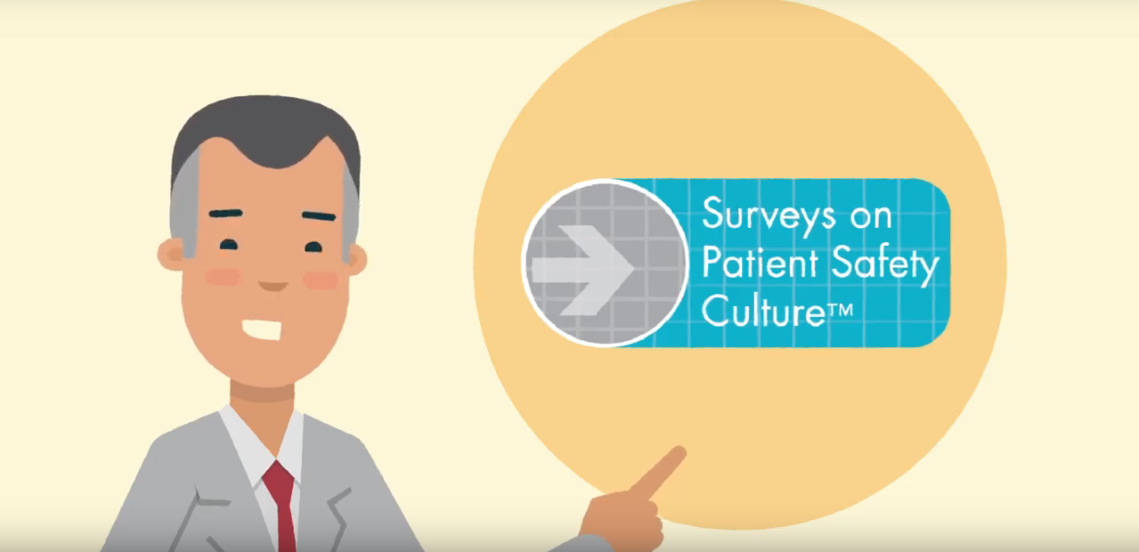What Gets Measured Gets Managed

Healthcare organizations are certainly not lacking data. We measure everything and anything that can move over time. We measure employee attendance, physician engagement, hand hygiene, bloodborne pathogen exposure, time to answer a call light, equipment downtime, number of falls, and the list goes on. However, the ability to measure and review data doesn’t mean we’re always measuring the right things. Likewise, just because we are measuring something, there is no promise that it will magically improve without some form of managed effort.
Measurement, and the resulting data, can help us manage and assess progress in important areas such as quality and safety. A less explored data point that can significantly impact and strengthen quality and safety of care is culture data. It’s also now being used in many new and innovative ways to strengthen organizational sustainability.
The links between organizational culture, safety, and quality are nothing new. Many industries have generated high-reliability outcomes by addressing culture change. By controlling an organization’s ability to change and respond, culture has an incredible impact on organizational success. As management expert Edgar Schein wrote, “Culture determines and limits strategy.”
One approach to understanding an organization’s current state of patient safety is to collect data around specific adverse events, near-misses, and unsafe conditions. This data reflects a reality that’s known by frontline staff but is often difficult to fully capture. Many organizations have been collecting this data for a long period of time, but consider the quantity and quality of the data collected in the past at your own organization.
Challenges in collecting “good” data include:
- Lack of education about what to report;
- Lack of education about how to report, including inefficient reporting processes;
- Lack of prioritization to report a mistake, near-miss, or unsafe condition; or
- Staff members who are fearful to report a mistake.
An artificially low number of reports can be interpreted several ways. Most often it generates a false sense of security for leaders who assume all is well. The Institute of Medicine’s report To Err is Human addressed this false reality and implemented a paradigm shift by encouraging leaders to study mistakes and respond to them proactively rather than reactively. This encouraged the development of safety science and corresponding changes in culture.
“Culture,” in its simplest form, consists of the attitudes, beliefs, and perceptions of a collective group of people. It shapes their behaviors, decisions, and choices and is therefore a complicated but highly influential component of the safety equation. “Patient safety culture” is the extent to which an organization’s culture supports and promotes patient safety.
Culture is local. Many organizations have seen how subcultures can develop with their own identity or values. Shift teams or locations often develop their own unique subcultures. This can result from distance, unique shared experiences, or just variations in local management. Unfortunately these variations can lead to the breakdown of the organization’s overall mission, vision, and values.
How Healthy is Your Patient Safety Culture? The First Step to Diagnosing It, Is to Measure it. Learn More.
Understanding employees’ attitudes and perceptions helps leaders as they seek new talent and work to retain talented staff. Candidates are attracted to work environments that demonstrate shared accountability, trust, and transparency. Safety programs based on the science of safety, data-driven outcomes, strong leadership, and a supportive culture will move healthcare organizations forward in a progressively demanding and competitive environment.
Patient safety culture can be measured by determining what is rewarded, supported, expected, and accepted in an organization as it relates to patient safety. The selection of a measurement tool is important and should not be selected at random. The Agency for Healthcare Research and Quality’s Surveys on Patient Safety™ (SOPS™) are the most recognized in the world for the validity, benchmark data, and diverse usage. There are multiple surveys for various healthcare organizations including hospitals, surgery centers, nursing homes, and pharmacies. Each survey is designed to assess several areas, such as:
- Teamwork
- Communication Openness
- Continuous Improvement
- Leadership Support for Patient Safety
- Feedback and Communication About Error
- Staffing
- Hand-offs
- Response to Errors
- Patient Safety Grade
Using a validated measurement tool is important, but it’s also important to validate your own results compared to other organizations like yours (your nursing home culture data compared to other nursing homes’ culture data). By looking at the right data, in the right way, you can find manageable areas to improve in an organized and progressive manner. Repeating the survey every 12-18 months can provide the data trends that will suggest if your improvement strategies are sticking.
Find the AHRQ’s patient safety culture assessment tools here. Or check out the Center’s survey administration options.
The Center for Patient Safety administers the surveys as a way to ensure anonymity and provide the most valid data. Reports provide structured data in the form of next steps and include benchmark results so you can compare your organization to other organizations.
If your organization recently administered the SOPS™, are they participating in the national database? If your survey was administered by CPS, we’ll submit your data for you! Contributing to the national compare database keeps benchmarks relevant and valuable.
Contact us for more information.
.png)

